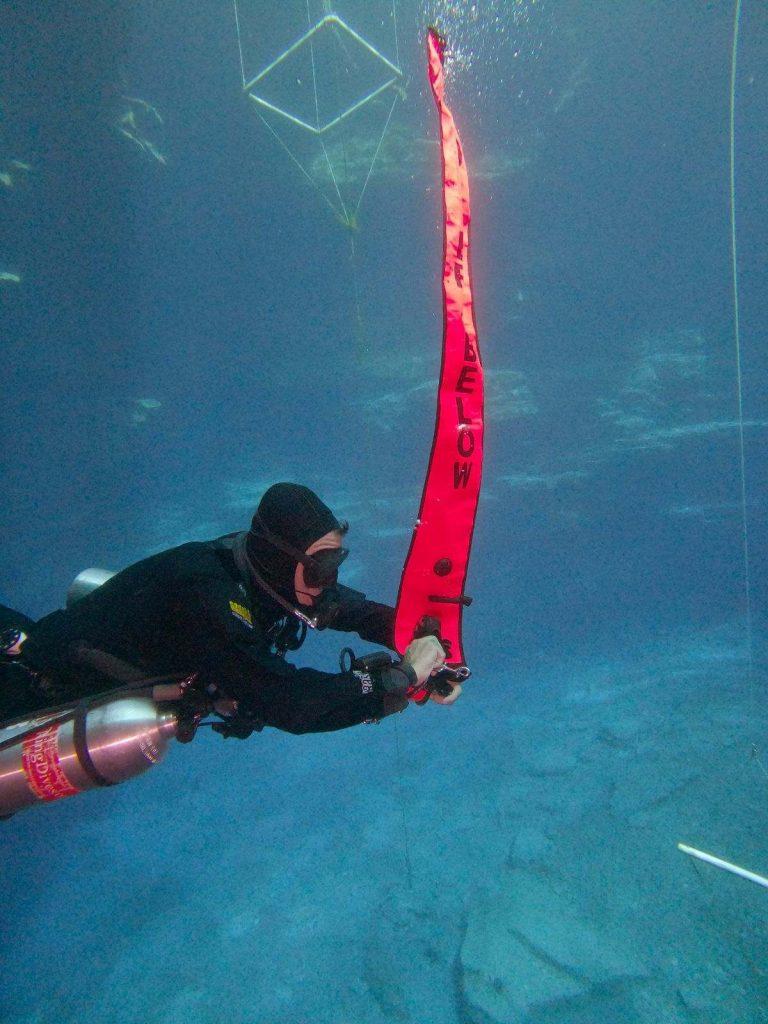What is Technical Diving?
Technical diving is simply executing dives that exceed recreational limits of time, or depth. Technical dives are conducted in deep water, caves, and wrecks, which may require complex navigation. Because these dives feature an inability to ascend directly to the surface, either because of mandatory decompression stops (soft overhead environments) or the hard ceilings found in caves and wrecks, technical divers require additional training and experience to perform these dives safely.

Redundancy and Preparedness
Given the risks inherent in technical diving, redundancy and preparedness are required. Redundant equipment, such as multiple gas supplies, redundant buoyancy control, and multiple lights are considered mandatory. Pre-dive planning is also mandatory. It includes creating a gas plan, decompression schedules, and contingency plans and procedures. Comprehensive planning, extensive training, and frequent practice help ensure we can safely complete tech dives.
Decompression Diving
Decompression diving involves managing the release of accumulated inert gases from the body during ascent. This process requires adherence to precise decompression schedules, which dictate the duration and depth of stops needed to off-gas safely. Failure to follow these protocols can result in decompression sickness, characterized by symptoms ranging from mild joint pain to neurological impairment or even death. Technical divers meticulously plan dives, calculating gas mixtures, bottom times, and ascent profiles to minimize the risk of decompression-related incidents.
Overhead Environments, Soft and Hard
The inability to ascend directly can pose additional problems Dives requiring decompression stops require a scheduled ascent. Ascending too quickly, or spending insufficient time at depth can lead to decompression sickness/illness. This is a potentially life-threatening condition resulting from the growth of nitrogen bubbles in the body.
In hard overhead environments, divers must be prepared to conduct long exits with sufficient gas remaining in the event of a catastrophic failure.
Overhead environments and confined spaces require specialized training. Divers must maintain awareness of their surroundings and ensure they avoid entanglement. In hard overhead environments, a line to open water must be laid.
Gas Management
Technical divers utilize multiple gas supplies, travel gas, bottom gas, and decompression gases. Gas planning involves using surface air consumption rates to determine the sufficiency of gas and gas reserves. Divers also plan for mistakes, and emergencies such as gas loss, staying too long, or going too deep..
Buoyancy Control and Trim
Precise buoyancy control and trim are essential for maintaining depth and stability throughout the dive. Refining neutral buoyancy, trim and breath control are some of the fundamentals that must be mastered before commencing any technical dive.
Equipment Considerations
Technical diving requires quality equipment. Gear that is used by recreational divers may be inadequate for this level of diving. For example, yoked regulators can be knocked off and present an entanglement hazard, so DIN regulators are preferred. The same can be said for unbalanced regulators.
Multiple lights are required, and here at Viking Dives, we recommend that tech divers prepare for and practice skills in preparation for entering hard overheads. The consensus among technical divers is that three lights are the minimum for tech diving. One primary light, like the Orcatorch D360, and two backup lights are required for overhead environments. This ensures that the team can exit environments where no light is available from the surface, even in the event of a failure.
Dive computers are required by most agencies, with some notable exceptions (GUE and UTD), but a computer can never replace pre-dive planning. Dive Computers and Monitoring Devices: Dive computers play a vital role in monitoring depth, time, and decompression status during technical dives. Additionally, redundant monitoring devices such as bottom timers, depth gauges, and compasses provide essential backup information in case of computer failure.
Training and Certification in Technical Diving
Becoming a proficient technical diver requires extensive training. A number of agencies offer certification. At Viking Dives, we offer certifications from Technical Diving International (TDI), but the truth is, the agency doesn’t matter. When you are looking for a technical diving class, you should consider the instructor. Having a competent instructor who works with your learning style is far more important than the letters on your c-card.
Conclusion
Technical diving is the pinnacle of exploration, even today, it offers divers the chance to go places that have never been viewed by another human being. Taking a comprehensive approach to safety, preparedness, redundancy, meticulous planning, and ongoing training, technical divers can explore with confidence and go places that 99% of the world will never see.
If you think you’d like to learn more, check out our Intro to Tech and Technical Sidemount courses. You will learn the basics of tech diving in a controlled environment that will build your skills and allow you to start your journey into the world of real exploration.
